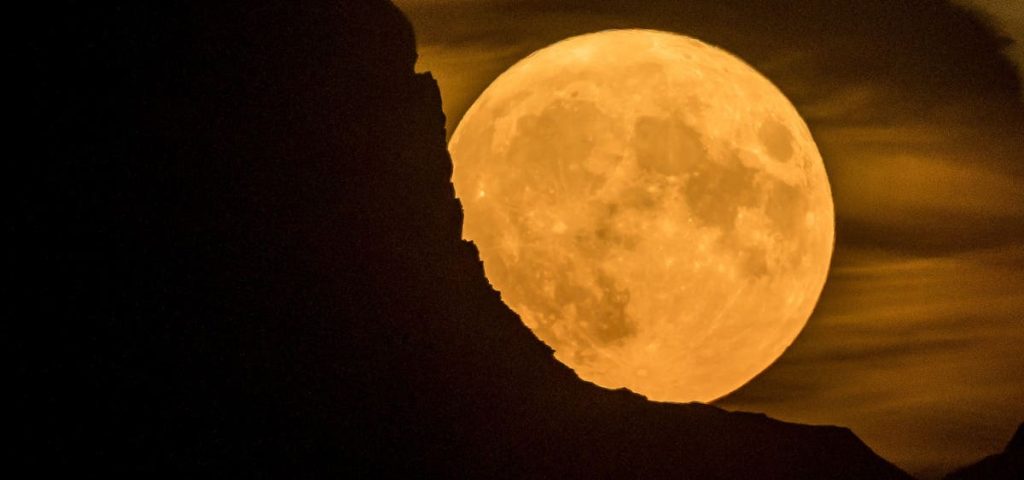Rising in the east at dusk on Wednesday, August 30, 2023 will be the year’s biggest, brightest and best full moon—the “Super Blue Moon”—but when it will appear at its largest might surprise you.
It’s called a supermoon because it’s a perigee full moon, just as the full “Super Sturgeon Moon” was on August 1. Perigee is the point in the moon’s orbit when it’s closest to Earth so appears slightly larger and brighter in the night sky.
“It will be the closest full moon this year, arriving less than ten hours after the lunar perigee,” said Tom Kerss, astronomer and author of Observing Our Solar System: A Beginner’s Guide, in an email. “It will be just a little brighter and larger in appearance than the full moon we witnessed on August 1.”
Year’s Closest Full Moon
Of the two full moons in August—the reason why this coming full moon is nicknamed the “Blue Moon”—it’s the second one that will be the closest, though only by a whisker. While August’s second full moon will be 222,023 miles (357,311 km) from Earth, the “Sturgeon Moon” was 222,043 miles (357,344 kilometers), a mere 20 miles (33 kilometers) farther away.
“A supermoon can look 10-15% bigger and 25-30% brighter than a normal full moon,” said Professor Don Pollacco, an astronomer in the Department of Physics at the University of Warwick in the U.K., in an email. “But to most people they actually look much the same.”
Just as intriguing is the timing of the spate of “supermoons.”
“It’s interesting that the two brightest perigee full moons have arrived in the same month, but even more so at a time when many of us are thinking about the moon, thanks to India’s great success with the Chandrayaan-3 mission,” said Kerss.
‘Supermoon’ Biggest At Midnight
To see the “Super Blue Moon” at both its biggest and its best will require looking at it twice. “Curiously, your location on the Earth plays a role in how “super” the supermoon really appears,” said Kerss. He explained that when the moon is seen rising or setting the observer is thousands of miles farther from it than when it is highest and crossing the meridian.
“Earth’s rotation brings you closest to the full moon around midnight, solar time, or an hour after if you’re on summer time,” said Kerss. “But you should also step out after sunset and watch the spectacular moonrise, which is always a delight.”
Don’t Miss The Full Moon Rise
As well as the full moon looking a deep orange color as it rises on the east at moonrise where you are on August 30, there’s a tendency to it to seem larger, even though it’s farther away. “Any full moon rising can look bigger than normal,” said Pollacco. “This is partly due to Earth’s atmosphere and also an optical illusion.”
This is the so-called “moon illusion,” which describes the phenomenon that a full moon seen near the horizon often looks huge when seen close to the ocean, mountains or amid a cityscape because of the way human brains process visual information, according to NASA.
Wishing you clear skies and wide eyes.
Read the full article here










